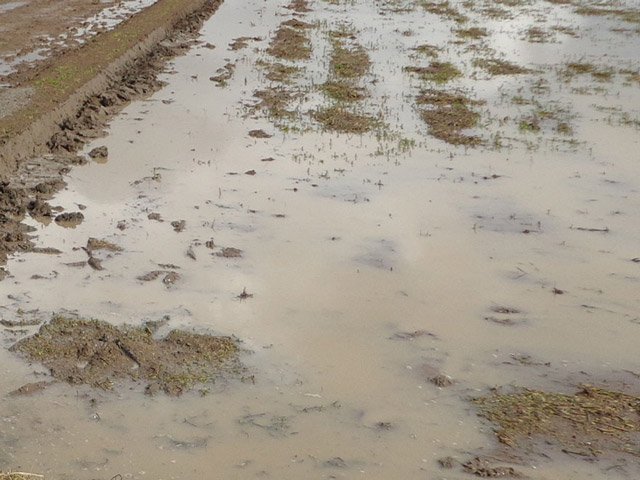Cloddy soil
 What it does
What it does
Cloddy soil happens when the soil is too soft at the seeding stage resulting in seeds getting planted too deep. This causes problems in emergence, and limits water absorption for germination.
Why and where it occurs
Having cloddy soil can be a problem in all dry direct-sown fields. It generally occurs when the soil is tilled and it is too dry.
How to identify
Check the field for the following symptoms:
- soil clods are much larger than seed size at planting stage
- poor crop emergence in dry-seeded fields
The pattern of damage is usually general across the field.
Various problems causing problems of crop establishment (e.g., cloddy soil, seed too deep, soil too soft at seeding, poor emergence in low spots in fields, heavy rainfall at seeding, soil crusting, poor seed quality, low seed rate, water stress, muddy water at seeding, clogged seeder and/or pests such as ants, birds and rats that remove seed at planting.
To confirm cause of problem, check or ask farmer if the clod size is much larger than seed size at the time of dry seeding.
Why is it important
Good planting or crop establishment lays the foundation for good yield.
Cloddy soil can greatly reduce crop stand in dry direct-seeded fields. Its economic effect can be direct in terms of stand and yield reduction or indirect in terms of increased tillage costs to break down clod size.
How to manage
When soil is tilled too dry, it will typically result in large, dry and hard clods, which are difficult to break down.
- For dry direct seeding, tillage is best done when soil moisture is in below field capacity and in well-above permanent wilting point
- Till sandy soils at a higher percent of available moisture than clayey soils
- Secondary tillage should follow primary tillage within a day or two for clayey soils with a little wider window of opportunity for sandy soils
- Rainfall or irrigation can break clod size down







